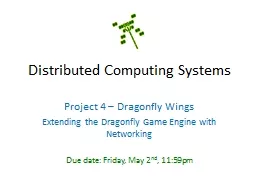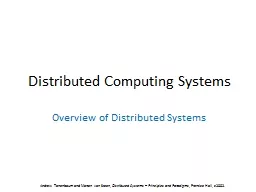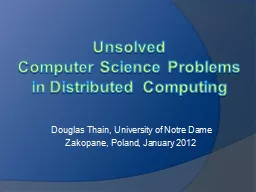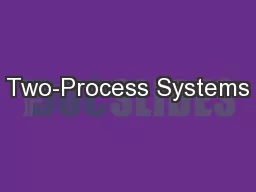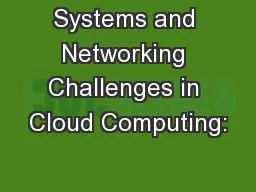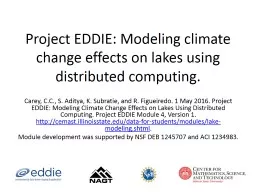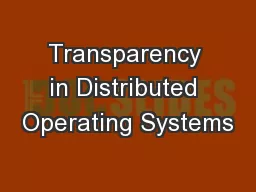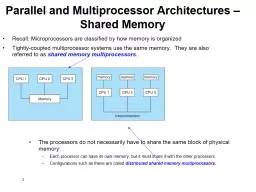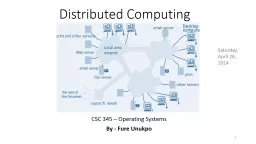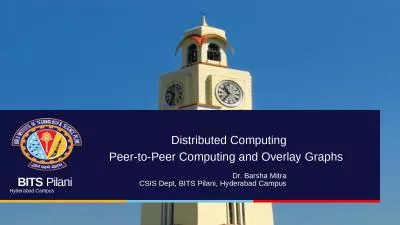PPT-Distributed Computing Systems
Author : phoebe-click | Published Date : 2018-01-04
Project 4 Dragonfly Wings Extending the Dragonfly Game Engine with Networking Due date Friday May 2 nd 1159pm Synopsis Goals Understand implications of distributing
Presentation Embed Code
Download Presentation
Download Presentation The PPT/PDF document "Distributed Computing Systems" is the property of its rightful owner. Permission is granted to download and print the materials on this website for personal, non-commercial use only, and to display it on your personal computer provided you do not modify the materials and that you retain all copyright notices contained in the materials. By downloading content from our website, you accept the terms of this agreement.
Distributed Computing Systems: Transcript
Download Rules Of Document
"Distributed Computing Systems"The content belongs to its owner. You may download and print it for personal use, without modification, and keep all copyright notices. By downloading, you agree to these terms.
Related Documents

